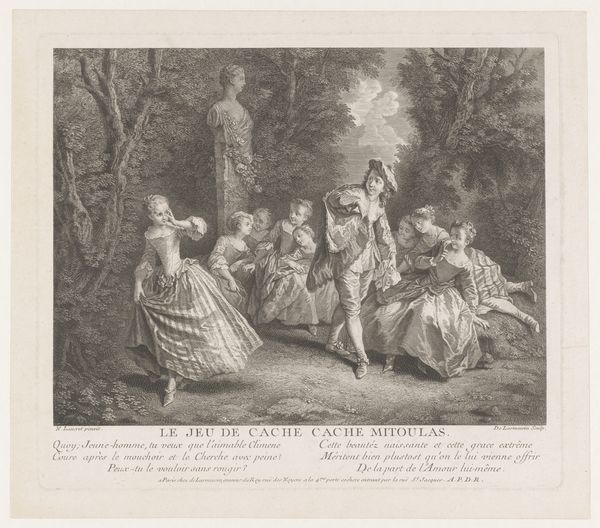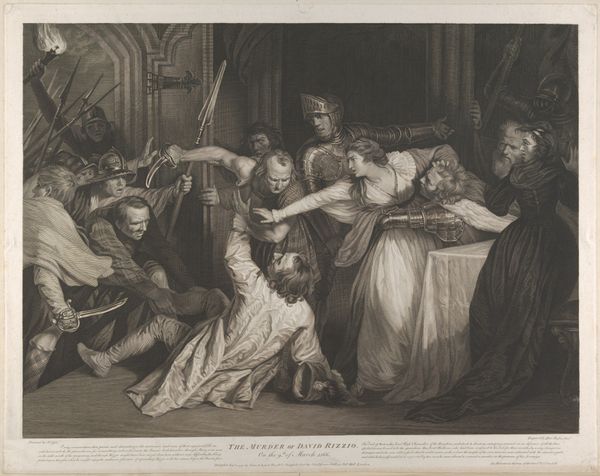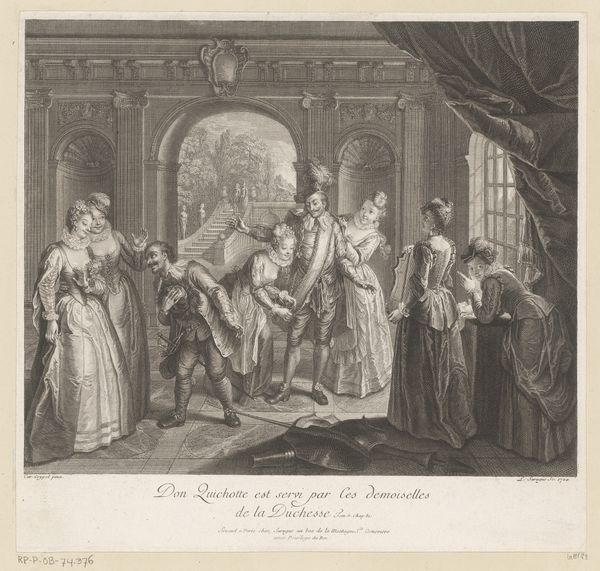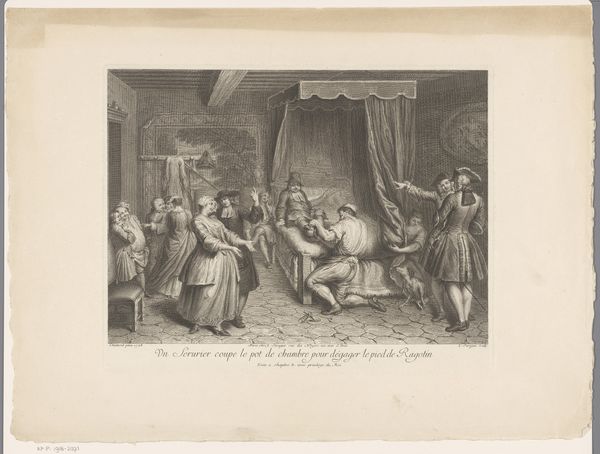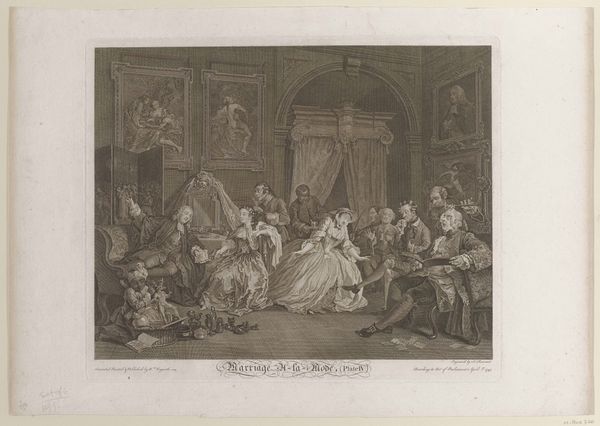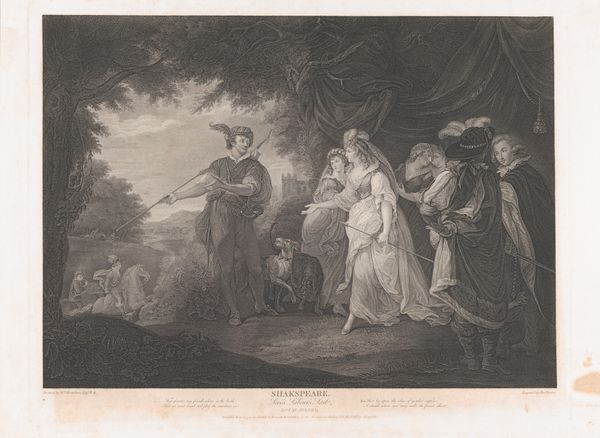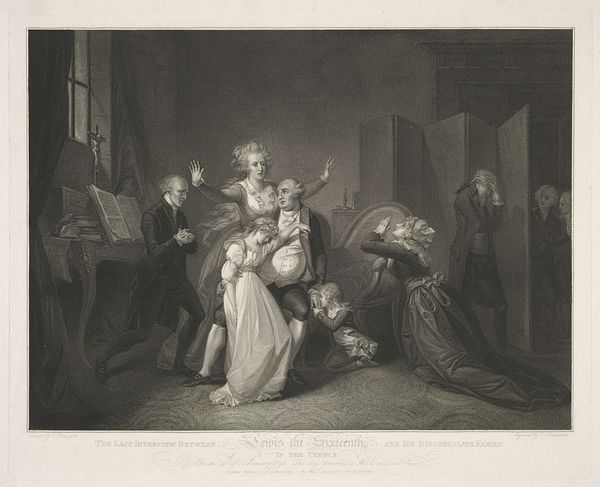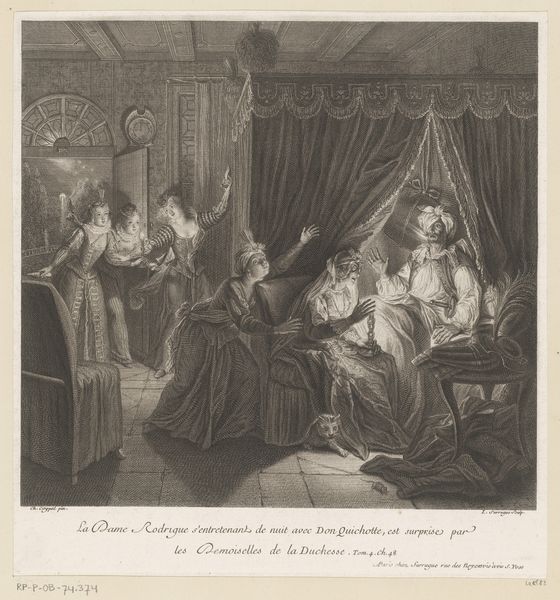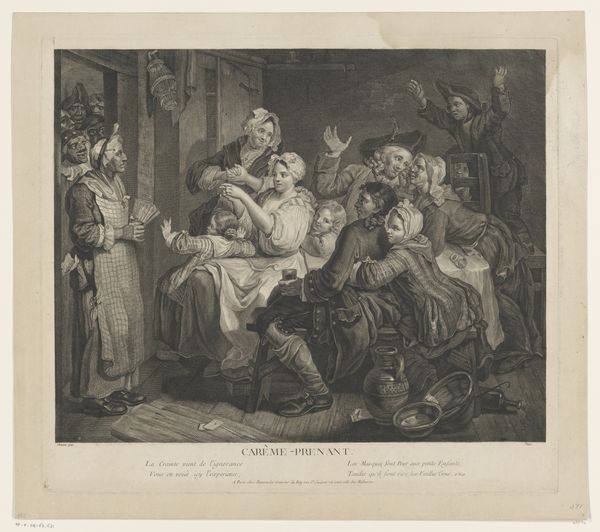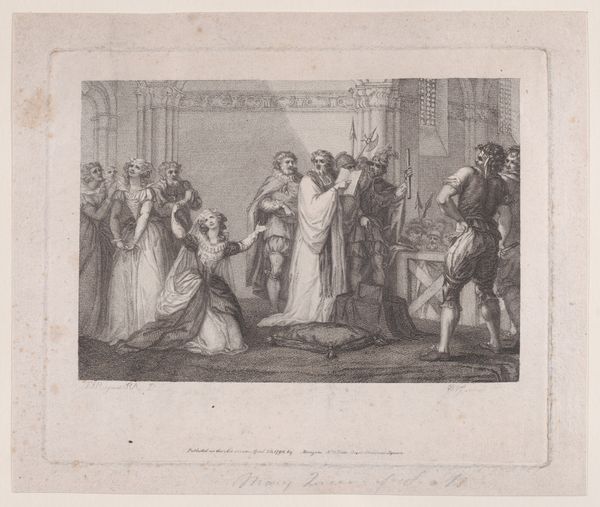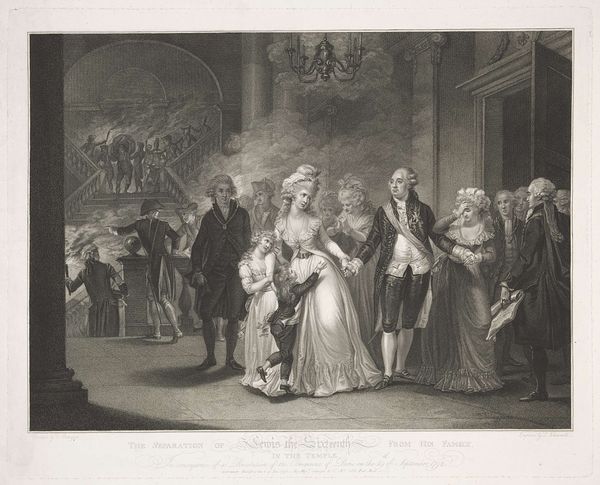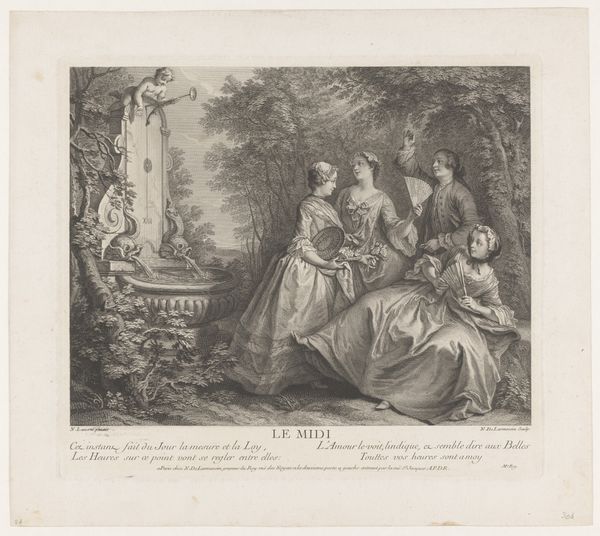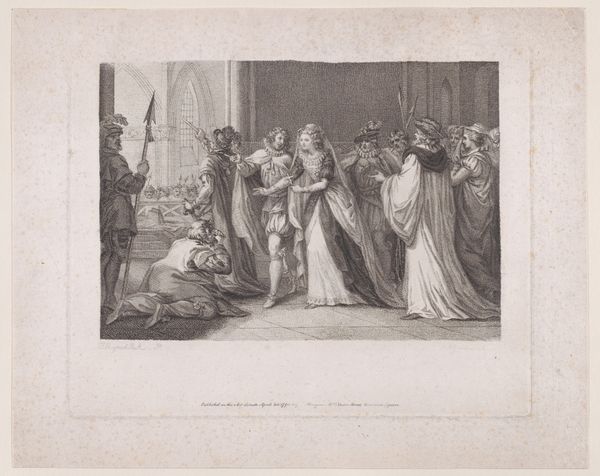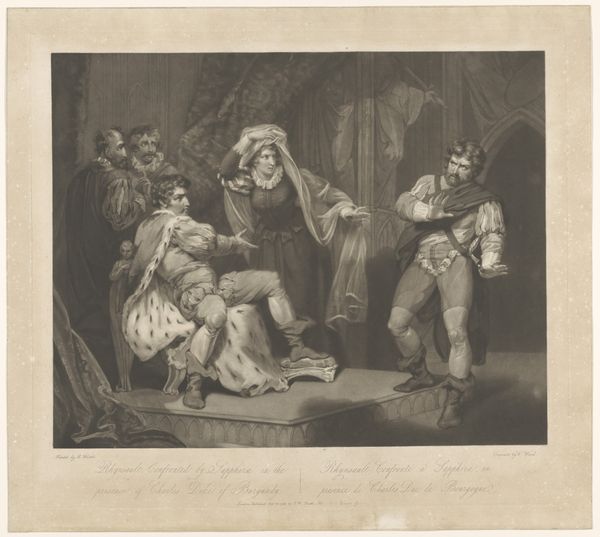
engraving
#
narrative-art
#
figuration
#
romanticism
#
history-painting
#
engraving
Dimensions: height 550 mm, width 607 mm
Copyright: Rijks Museum: Open Domain
Editor: So, this is Valentine Green’s "Dwaze maagden vragen de wijze maagden om olie," or "The Foolish Virgins Asking the Wise Virgins for Oil," an engraving from 1795, housed at the Rijksmuseum. It has such a dramatic feel, almost theatrical with the contrasting light and dark... How do we unpack all that is going on? Curator: Well, consider the context. It’s an engraving reproducing an earlier painting, which inherently places it within a system of dissemination. How does reproductive printmaking like this participate in broader cultural conversations of the time? The engraving process makes it reproducible, but what happens to the message or the power of the imagery in the reproduction? Editor: That’s fascinating! So, you're saying we need to think about the original context for the elite that commissioned Green to produce it? Curator: Precisely. This biblical scene, depicted in the style of Romanticism, speaks to themes of morality, judgement, and preparedness. But who is consuming this image? What moral code are they being encouraged to adopt or maintain, and who benefits from that? Think about the late 18th-century social and political landscape. What societal norms regarding women, religion, and social order might this print be reinforcing? Editor: Okay, I see. The title gives the narrative, so Green might be reinforcing a narrative by associating wisdom with an elite class that "has oil" and knows how to conserve it? Curator: That’s a good interpretation! And, notice how the "wise" virgins are situated in this classical architecture with moonlight, and the "foolish" virgins are hidden in darkness? What might that choice signify about taste, status, and visual hierarchies? Editor: So, understanding the art really depends on its place in cultural and historical institutions, shaping, reflecting, and reinforcing power? Curator: Absolutely! Looking beyond the image, consider how and where it was displayed and circulated, and whose stories it validated. Editor: Wow, I never thought about approaching it that way. This print suddenly speaks volumes about power dynamics and the public role of art! Curator: Exactly, and it’s a reminder that art is rarely just "art." It’s deeply interwoven with the social and political fabric of its time.
Comments
No comments
Be the first to comment and join the conversation on the ultimate creative platform.
